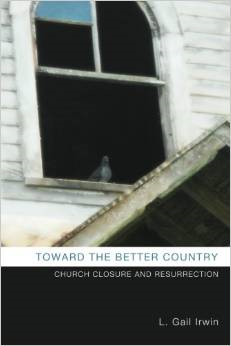The Wall Street Journal recently reported on another church having difficulty selling its building because of resistance from a preservation group. This time the city is Memphis, and the church is 99 year old Union Avenue Methodist Church. The 40 member congregation voted 18 months ago to sell its property to the CVS Corporation, which plans to demolish the building and build a pharmacy on the site.
The Journal’s Timothy W. Martin did a good job of laying out both sides of this debate, which is being waged in many downtowns around the country. The congregation was overwhelmed by the cost of maintaining its facility. They wanted to merge with another church and use the proceeds of the sale to engage in a more active mission to the surrounding community.
But the preservation group wants to maintain buildings that offer a sense of history, and understandably doesn’t want to see the neighborhood overrun by chain stores.
Martin points to the trend in other cities as well: “In Haverhill, Mass., residents and the city’s historic society helped block the sale of a 163-year old Armenian Apostolic church to a developer who planned to raze it and build a Burger King. Walgreen Co. recently built stores on former church sites in New York and Kentucky. Rite Aid Corp. opened a location in 2008 at the site of a former Protestant church in Pennsylvania.”
Think about it: would you rather have a church or a Burger King next door to your house?
Think about this: which one would you walk into more often?
This conflict forces us into one of the most challenging questions faced by declining congregations: what is the Church? It is a group of people; it is a mission inherited from Christ; it is the visible manifestation of an invisible Kingdom. In Jesus’ time, it was never a building. But for many generations, it has been a physical sanctuary, a symbolic gathering place for the community, a resting place for the weary, and a refuge for the vulnerable.
What does it do to our image of the Church to see those sanctuaries fall?
And what is God’s image of the Church?
I recall the words of a spiritual I love to sing:
I am a pilgrim and a stranger,
traveling through this wearisome land.
I’ve got a home in that yonder city, good Lord,
And it’s not made, not made by hand.
You can read the Wall St. Journal article here. Thanks to my husband Charles for weeding this one out for me!




Sacred Cows are sacred for a reason! There is much emotional and spiritual attachment to holy places and spaces. In uncertain times, especially for older people who have so many unwelcomed changes happening, the destruction of a church building is upsetting. Some people are historical (“hysterical?”) preservationists, but when it comes to scared spaces, it is a serious matter.
Our spiritual ancestors wandering in the desert for 40 years with a portable tabernacle faced another set of concerns. The presence of the Solomonic Temple in Jerusalem for several centuries is another strand of our spiritual DNA. You ask a good question about which building do people in the neighborhood use more frequently — a hulking church or a convenient store? Obviously there are answers to be found in today’s life and yesterday’s theological experience. I think that’s why the biblical redactors during the Babylonian exile included as many strands of their faith as they could — because circumstances and ministries change.
Marty, thanks for your comment. When you speak of the Solomonic Temple, I remember in Samuel 7 when David decided to build a temple for the Lord, but Nathan got a message from God telling him not to. If you only read to verse 9, it sounds like God is saying, “I don’t need a house! I’m a nomadic God!” But starting in verse 10, God does promise David that his son Solomon will build a “place…so that they may live in their own place, and be disturbed no more.” It sounds like both God and David want to provide shelter for each other. I think David’s heart was in the right place, but God was saying “Now is not the time to build a temple.”
Maybe we are living in a time in history when God is calling the church to be more nomadic.
Pingback: Should We Sell Our Church Building? | Gail Irwin